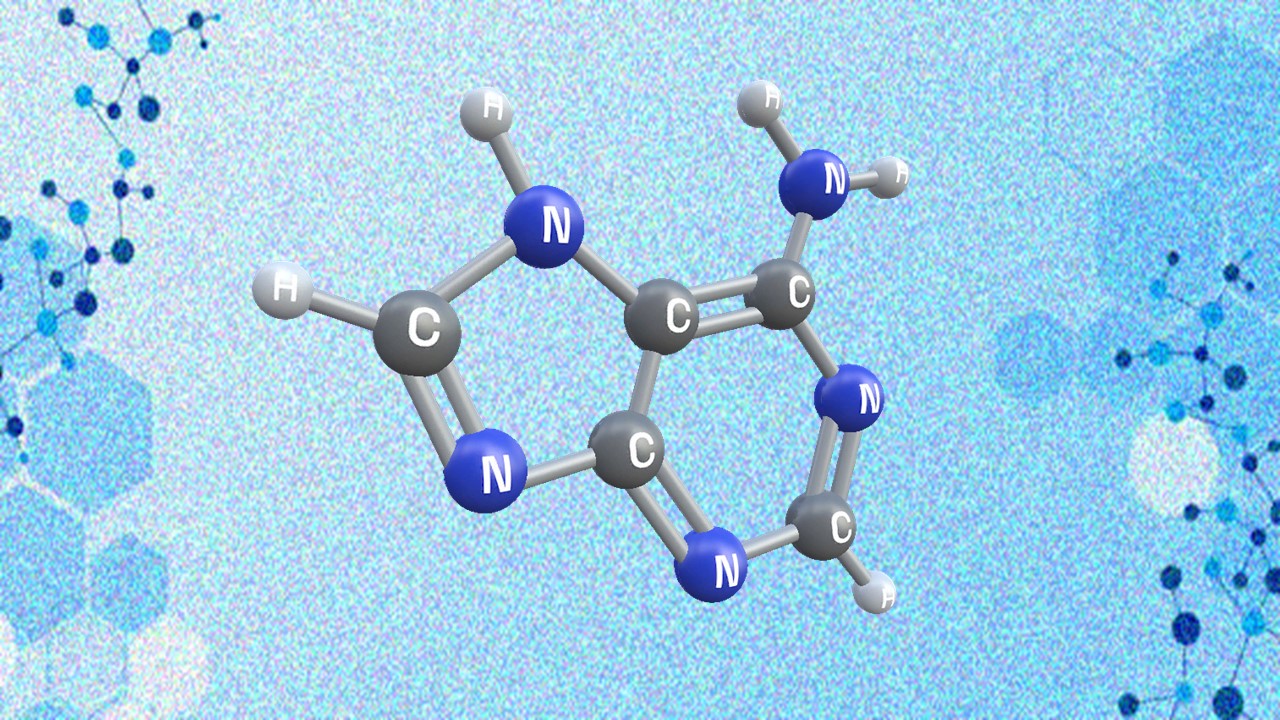The intricate process of drug discovery, an endeavor fraught with challenges, has been the cornerstone of modern medicine’s advancements. With the average timeline stretching a decade and costs soaring to a staggering $2 billion for a single drug’s journey to market, the gravity of success and the implications of failure are undeniable. The quest to identify efficacious drug targets takes center stage in this narrative. Astonishingly, despite the wealth of biological information, a mere fraction of potentially druggable targets have been identified. In the face of this complexity, the emergence of Artificial Intelligence (AI) presents a ray of hope, promising to reshape drug discovery through precision target identification. In this article, we explore the convergence of AI and target identification, shedding light on strategies and implications that drive drug discovery forward.
A Historical Perspective: Pioneering Target Identification Approaches
Before we venture into the cutting-edge realm of Artificial Intelligence (AI) and its impact on target identification, it’s essential to first reflect on the foundation that has been laid by conventional approaches. Over the years, a trio of strategies—experimental, multiomic, and computational—has played a pivotal role in shaping the landscape of target identification. These strategies have collectively contributed to our understanding of diseases and the development of potential treatments.
The Role of Experimental Methodologies
Experimental methods, deeply rooted in the realm of affinity-based biochemistry, have been the cornerstone of target discovery for decades, tracing their origins back to the 1960s. These methodologies revolve around understanding the interactions between molecules, particularly the interactions between potential drugs and their target proteins. By exploring these interactions, researchers have gained insights into the mechanisms that drive diseases. One remarkable example is the use of small molecules that bind to specific proteins, allowing us to study the roles and functions of these proteins in different biological contexts.
Revealing Proteomic Dynamics: Comparative Profiling
A technique that has significantly contributed to our understanding of diseases is Stable Isotope Labeling by Amino Acids in Cell Culture (SILAC). This approach, falling under the umbrella of comparative profiling, enables researchers to study how proteins change in response to various conditions or diseases. By labeling proteins with isotopes, researchers can distinguish between proteins from different sources, shedding light on the dynamic changes that occur in the proteome across diverse disease contexts. This technique has provided valuable insights into disease mechanisms and potential drug targets.
Unveiling Disease Pathways: Genetic and Chemical Screens
Intricate disease pathways have been illuminated through genetic and chemical screens, which are made possible by techniques like RNA interference (RNAi) and CRISPR-Cas9. RNAi allows researchers to selectively silence specific genes, helping to identify genes that play key roles in diseases. On the other hand, CRISPR-Cas9 technology enables targeted gene editing, allowing researchers to explore the consequences of modifying specific genes. These screens have revealed the complex interplay between genes and diseases, offering a deeper understanding of the molecular underpinnings of various disorders.
Empowering Multiomic Approaches
The multiomic approach has emerged as a powerful strategy that encompasses a wide range of biological information, including genomics, transcriptomics, proteomics, epigenomics, and metabolomics. By integrating insights from these different layers of information, researchers can construct a comprehensive view of the genetic and molecular factors driving diseases. For instance, Genome-Wide Association Studies (GWAS) have played a vital role in identifying genetic variants associated with disease susceptibility. Integrating data from these various omics disciplines allows us to piece together intricate disease mechanisms and potential intervention points.
The Role of Computational Strategies
As technology has advanced, so have computational strategies for target identification. Machine learning, a subset of AI, has emerged as a key player in this field. Using machine learning algorithms, researchers can predict potential drug targets by analyzing the structures of proteins and the properties of compounds. Techniques such as structure-based methods and reverse docking utilize computational models to identify molecules that may interact with specific proteins. These strategies have expanded the possibilities of target identification by leveraging the power of data analysis and modeling.
A Historical Backdrop for AI’s Arrival
This journey through conventional target identification methods provides a crucial backdrop for the introduction of AI into the field. The accumulation of knowledge and insights from experimental, multiomic, and computational approaches has paved the way for AI to further revolutionize how we identify and develop therapeutic targets. The convergence of traditional methodologies with AI-driven strategies holds the promise of accelerating the drug discovery process and improving our ability to address complex diseases. As we delve into the AI frontier, we build upon this rich history to explore new horizons in target identification and drug development.
AI’s Rise to Prominence: Revolutionizing Target Identification
Artificial Intelligence has emerged as a game-changing force in the realm of target identification, offering the remarkable ability to unravel the complexities of biological networks and unveil concealed patterns embedded within vast and intricate datasets. This capacity has ushered in a transformative era in target identification that spans across a diverse range of applications, reshaping the landscape of drug discovery.
Decoding Complexity through Hidden Patterns
The true potential of AI lies in its aptitude to decipher the intricate web of biological interactions that govern health and disease. Within the sprawling expanse of biological data, AI possesses the prowess to unearth patterns that elude human perception. By teasing out these hidden connections, AI has the potential to revolutionize the identification of therapeutic targets. This process involves identifying specific molecules or pathways that can be manipulated to intervene in disease processes and restore health.
Revolutionizing Target Identification
AI’s transformative influence extends across a spectrum of applications in the realm of target identification. One striking facet is its role in aiding the discovery of biomarkers and therapeutic targets. Biomarkers are essential clues that provide insights into disease presence, progression, and response to treatment. AI’s analytical prowess allows it to comb through vast datasets to pinpoint these crucial indicators, accelerating diagnosis and treatment selection.
AI-Powered Molecular Design and Beyond
In the realm of drug development, AI takes center stage in designing molecules with enhanced therapeutic potential. By analyzing existing molecular structures and predicting their interactions with target proteins, AI-guided molecular design streamlines the creation of novel drug candidates. Moreover, AI’s predictive capabilities extend to pharmacokinetics, enabling the estimation of how a drug moves within the body, how it’s metabolized, and its potential side effects.
AI in Clinical Trials and Drug Generation
The impact of AI is particularly evident in the optimization of clinical trials. By analyzing patient data, AI can enhance trial design, recruitment, and monitoring, leading to more efficient and effective studies. What’s even more astonishing is the emergence of AI-generated drugs. This fusion of human ingenuity and machine learning has resulted in drug candidates that are born from the synergy of both, and these AI-generated drugs have progressed into clinical trials, marking a significant milestone in therapeutic innovation.
The Era of Deep Learning and Early Drug Discovery
One standout feature of AI’s progression is the advent of deep learning. This subset of AI, characterized by its intricate neural network architecture and remarkable pattern recognition capabilities, has led to breakthroughs in target discovery. Deep learning models have the ability to extract meaningful insights from complex data, enabling the identification of new drug targets and potential treatment strategies.
Predicting Drug Interactions and Compound Efficacy
AI’s role in target identification extends beyond the identification of targets alone. It encompasses predicting the interactions between drugs and their target proteins, as well as assessing the efficacy of chemical compounds. By analyzing vast datasets and simulating interactions, AI expedites the early stages of drug discovery, reducing time and resource investment.
The Synergy of AI and Target Identification
The convergence of AI and target identification represents a momentous leap into a new era of therapeutic innovation. AI’s ability to decode intricate biological networks, uncover hidden patterns, predict drug interactions, and guide molecular design propels us beyond the boundaries of traditional methodologies. This synergy not only accelerates drug discovery but also holds the potential to transform how we approach disease treatment. As we stand on the threshold of this new frontier, the possibilities for advancements in healthcare and the betterment of human lives are limitless.
The Uncharted Frontier: AI-Driven Target Identification Challenges and Ethical Considerations
The integration of Artificial Intelligence into the field of drug discovery offers immense promise, but with this potential comes a weighty responsibility to address ethical considerations. As AI becomes an integral tool in shaping the future of drug development, it is imperative to navigate the ethical landscape to ensure that its deployment is not only effective but also responsible.
Privacy, Interpretability, and Regulatory Frameworks
AI’s involvement in drug discovery raises critical concerns regarding privacy. The vast amount of data required for AI analysis often includes sensitive patient information. Striking a balance between utilizing this data for research purposes while safeguarding individual privacy is a crucial challenge. Moreover, AI’s decision-making processes can sometimes be perceived as “black boxes,” making it essential to ensure interpretability — the ability to understand and explain AI-generated results. Ethical guidelines should promote transparency in AI algorithms, allowing researchers and regulators to comprehend how AI reaches its conclusions. Additionally, establishing robust regulatory frameworks is vital to govern the use of AI in drug discovery and ensure that these technologies adhere to ethical standards.
Acceleration and Temporal Constraints in Drug Discovery
One of the striking benefits of AI in drug discovery is its ability to expedite the early stages of the process. AI can swiftly sift through vast datasets, identifying potential drug candidates and targets. However, despite this acceleration, the temporal demands of clinical trials remain unchanged. Clinical trials involve meticulous testing, data collection, and rigorous validation. This raises a dichotomy between the rapid pace of innovation driven by AI and the time-honored need for thorough validation in clinical settings.
Navigating the Tightrope of Innovation and Validation
The interplay between innovation and validation creates a delicate balance that drug discovery scientists must navigate. The rapid insights offered by AI’s predictive capabilities might be revolutionary, but they must be validated in real-world scenarios. This balancing act involves utilizing AI’s predictions to inform decisions while also ensuring that these predictions hold up under rigorous scientific scrutiny. Researchers must grapple with the challenge of adopting cutting-edge technology while maintaining the scientific rigor that is the hallmark of drug discovery.
AI and Human Insight: A Promising Union
Despite the challenges posed by the tension between innovation and validation, the combination of AI’s predictive power and human expertise holds immense promise. AI can rapidly generate hypotheses, identify potential drug candidates, and predict their interactions. However, human insight is indispensable for critically evaluating these predictions, designing experiments, and interpreting results. The synergy between AI and human insight has the potential to reshape the trajectory of drug discovery, allowing for more efficient and informed decision-making.
Concluding Thoughts: Ethical Responsibility and Transformative Potential
As AI continues to revolutionize drug discovery, the ethical considerations surrounding its implementation cannot be overlooked. Addressing issues related to privacy, interpretability, and regulations is paramount to ensure that AI’s potential is harnessed responsibly. While AI accelerates the identification of potential drug candidates, the cautious balance between innovation and validation must be maintained. Through a collaborative effort between AI-driven insights and human expertise, the landscape of drug discovery is poised for transformation, promising improved healthcare outcomes for individuals and society at large.
Subscribe
to get our
LATEST NEWS
Related Posts

Drug Discovery Biology
Unveiling the Elusive: The Prevalence Problem in Drug Discovery
When it comes to developing new drugs, researchers encounter a formidable challenge: the prevalence problem.

Drug Discovery Biology
Navigating Drug Development: Innovations in Preclinical Testing
As we navigate the complexities of drug development, a harmonious blend of traditional wisdom and innovative technologies will be paramount.
Read More Articles
Synthetic Chemistry’s Potential in Deciphering Antimicrobial Peptides
The saga of antimicrobial peptides unfolds as a testament to scientific ingenuity and therapeutic resilience.
Appreciating the Therapeutic Versatility of the Adenine Scaffold: From Biological Signaling to Disease Treatment
Researchers are utilizing adenine analogs to create potent inhibitors and agonists, targeting vital cellular pathways from cancer to infectious diseases.
Bioavailability and Bioequivalence: The Makings of Similar and “Close Enough” Drug Formulations
Scientists are striving to understand bioavailability complexities to ensure the equivalence of drug formulations from different manufacturers, crucial for clinical effectiveness.












